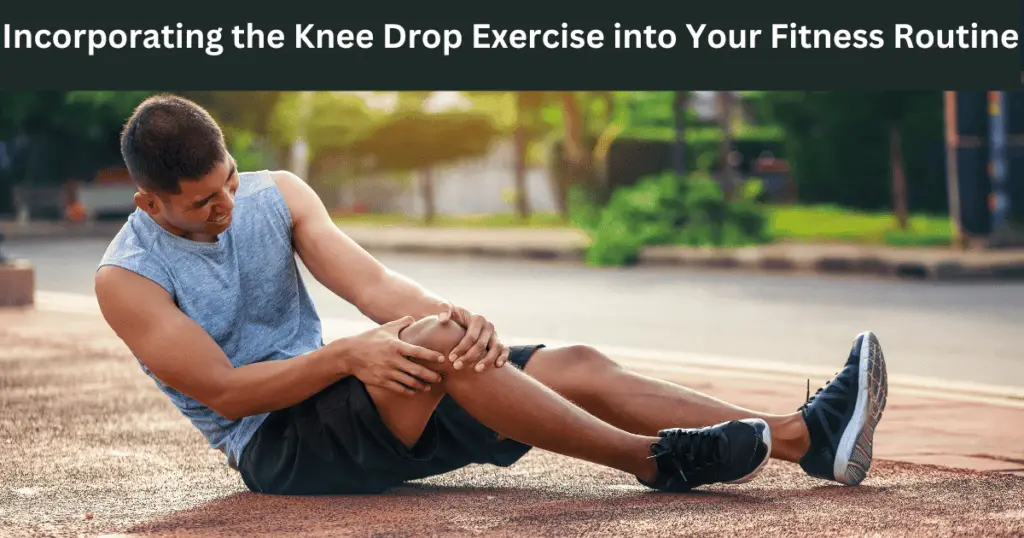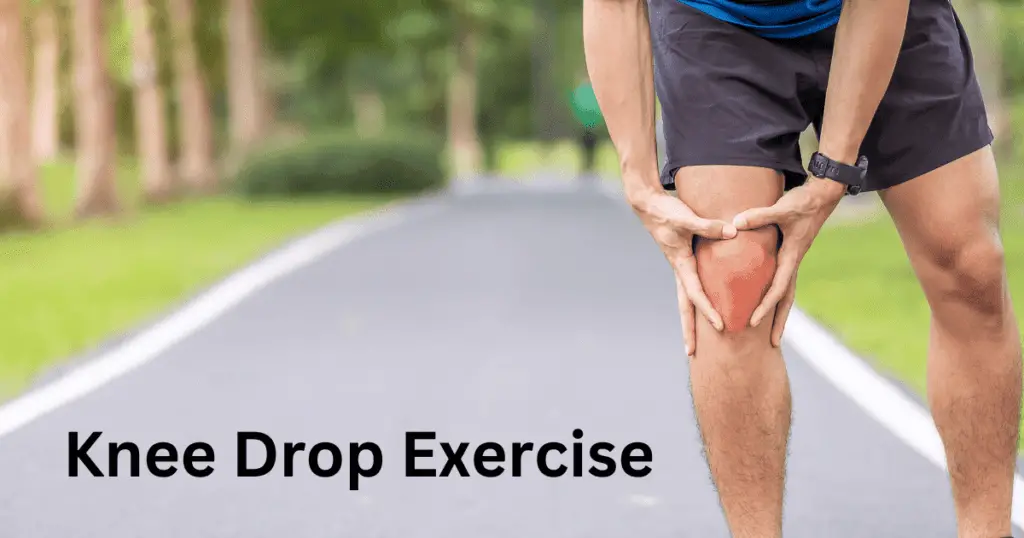The knee drop exercise is a versatile movement that targets the core muscles while enhancing stability and flexibility. Whether you’re a fitness enthusiast, gym trainer, or exercise beginner, incorporating the knee drop into your routine can bring numerous benefits. In this article, I will discuss deep into the intricacies of the knee drop exercise, covering proper form, variations, safety precautions, and effective ways to integrate it into your fitness routine.
The knee drop exercise, also known as knee drops or bent knee rotations, is a dynamic movement that engages the core muscles, particularly the obliques, while improving hip mobility. Its simplicity and effectiveness make it an ideal addition to any fitness regimen. By understanding the correct technique and incorporating variations, you can maximize the benefits and achieve optimal results.
1. Understanding the Knee Drop Exercise
Definition and Proper Form
The knee drop exercise involves lying on your back with your knees bent and feet flat on the floor. From this position, you slowly drop your knees to one side, maintaining control and engaging your core throughout the movement.
Muscles Targeted and Benefits
The primary muscles targeted during the knee drop exercise are the obliques, which are responsible for side-to-side movements and rotational stability. Additionally, the exercise engages the transverse abdominis, rectus abdominis, and hip muscles. The benefits of incorporating knee drops into your fitness routine include improved core strength, enhanced hip mobility, increased flexibility, and enhanced stability.
2. Step-by-Step Guide to Performing the Knee Drop Exercise
To perform the knee drop exercise with proper technique, follow these steps:
Preparing for the Exercise
- Lie on your back on a comfortable mat or flat surface.
- Bend your knees and place your feet flat on the floor, hip-width apart.
- Position your arms comfortably by your sides or place your hands behind your head for support.
Execution and Technique Tips
- Engage your core muscles by drawing your navel towards your spine.
- Slowly drop your knees to one side while keeping your feet and upper body grounded.
- Maintain control throughout the movement, avoiding any sudden or jerky motions.
- Pause briefly at the bottom of the movement, feeling a gentle stretch in your oblique muscles.
- Return to the starting position by smoothly raising your knees back to the center.
- Repeat the exercise on the opposite side, alternating sides with each repetition.
Common Mistakes to Avoid
To ensure proper execution of the knee drop exercise, be mindful of these common mistakes:
- Avoid lifting your upper body or shoulders off the ground during the movement.
- Do not let your feet come off the floor; keep them firmly planted throughout.
- Focus on engaging your core muscles rather than relying solely on momentum.
- Maintain a slow and controlled pace, rather than rushing through the exercise.
3. Variations and Modifications
The knee drop exercise can be modified to suit different fitness levels and goals. Here are some variations and modifications to consider:
Beginner-Friendly Modifications
- Perform the knee drop exercise with your feet placed on an elevated surface, such as a step or bench, to reduce the range of motion.
- Place a cushion or stability ball between your knees to add an extra challenge and engage the inner thigh muscles.
Advanced Variations for Added Challenge
- Straighten your legs while performing knee drops to increase the lever length and intensify the core activation.
- Hold a light dumbbell or medicine ball between your hands to add resistance and further engage the upper body.
Equipment Options for the Knee Drop Exercise
The knee drop exercise can be performed without any equipment, making it accessible for everyone. However, to add variety and challenge, you can incorporate equipment such as resistance bands or an exercise ball.
4. Safety and Injury Prevention
To ensure your safety and prevent injuries while performing the knee drop exercise, follow these guidelines:
Warm-Up Exercises and Stretches
Before starting any exercise routine, it’s essential to warm up your body and prepare your muscles for movement. Perform dynamic stretches, such as hip circles and torso rotations, to increase blood flow and loosen up your muscles.
Proper Progression and Intensity
Start with a range of motion that feels comfortable for your body. As you gain strength and flexibility, gradually increase the depth of the knee drop. Listen to your body and avoid pushing beyond your limits to prevent strains or injuries.
Precautions for Specific Medical Conditions
If you have any pre-existing medical conditions, especially those affecting the spine, hips, or core muscles, it’s crucial to consult with a healthcare professional or a qualified fitness trainer before attempting the knee drop exercise. They can provide tailored guidance based on your specific needs and limitations.
5. Incorporating the Knee Drop Exercise into Your Fitness Routine
To maximize the benefits of the knee drop exercise and integrate it effectively into your fitness routine, consider the following:
Complementary Exercises and Muscle Groups
The knee drop exercise pairs well with other core-strengthening exercises, such as planks, Russian twists, and bicycle crunches. Incorporating these exercises will provide a well-rounded core workout, targeting different muscle groups.
Sample Workout Routines
Here’s a sample workout routine that includes the knee drop exercise:
- Perform 3 sets of 12-15 repetitions of knee drops on each side.
- Follow with planks for 30 seconds, alternating with knee drops between sets.
- Finish with bicycle crunches for 3 sets of 15-20 repetitions.


Conclusion
Mastering the knee drop exercise not only strengthens your core muscles and improves hip mobility but also enhances overall stability and flexibility. By understanding the correct form, variations, and safety precautions, you can perform this exercise with confidence and reap its numerous benefits. Whether you’re a fitness enthusiast, gym trainer, or exercise beginner, the knee drop exercise is a valuable addition to any fitness routine. So, take the plunge, engage your core, and unlock the potential of this versatile exercise!
Remember, consistency and proper technique are key to achieving optimal results. Consult with a fitness professional if you have any concerns or specific goals. Embrace the journey, enjoy the progress, and witness the positive impact the knee drop exercise can have on your fitness journey.
Frequently Asked Questions (FAQs)
Q1. What muscles does the knee drop exercise target?
The knee drop exercise primarily targets the obliques, which are part of your core muscles. It also engages the hips, glutes, and lower back muscles to a lesser extent.
Q2. How often should I perform the knee drop exercise?
For optimal results, include the knee drop exercise in your core-based workout routines 2-3 times per week. Remember, consistency is key for muscle development and strength.
Q3. I’m a beginner. Can I still perform the knee drop exercise?
Absolutely! The knee drop exercise is versatile and can be modified to accommodate all fitness levels. Beginners can use modifications like reducing the range of motion or using support.
Q4. Can I perform the knee drop exercise while pregnant?
If you’re pregnant, it’s crucial to consult with a healthcare professional before starting any new exercise. Generally, it’s recommended to avoid exercises that involve lying flat on your back after the first trimester.
Q5. I felt a sharp pain in my lower back during the exercise. What should I do?
If you experience any sharp pain during the exercise, stop immediately. Consult with a healthcare professional to identify and address the issue. Remember, safety should always come first in any workout routine.
Q6. Can I use the knee drop exercise as part of my warm-up routine?
Yes, the knee drop exercise can be a great way to warm up your body, especially your core and hip muscles. Just make sure to perform it at a slow pace and within a comfortable range of motion.

